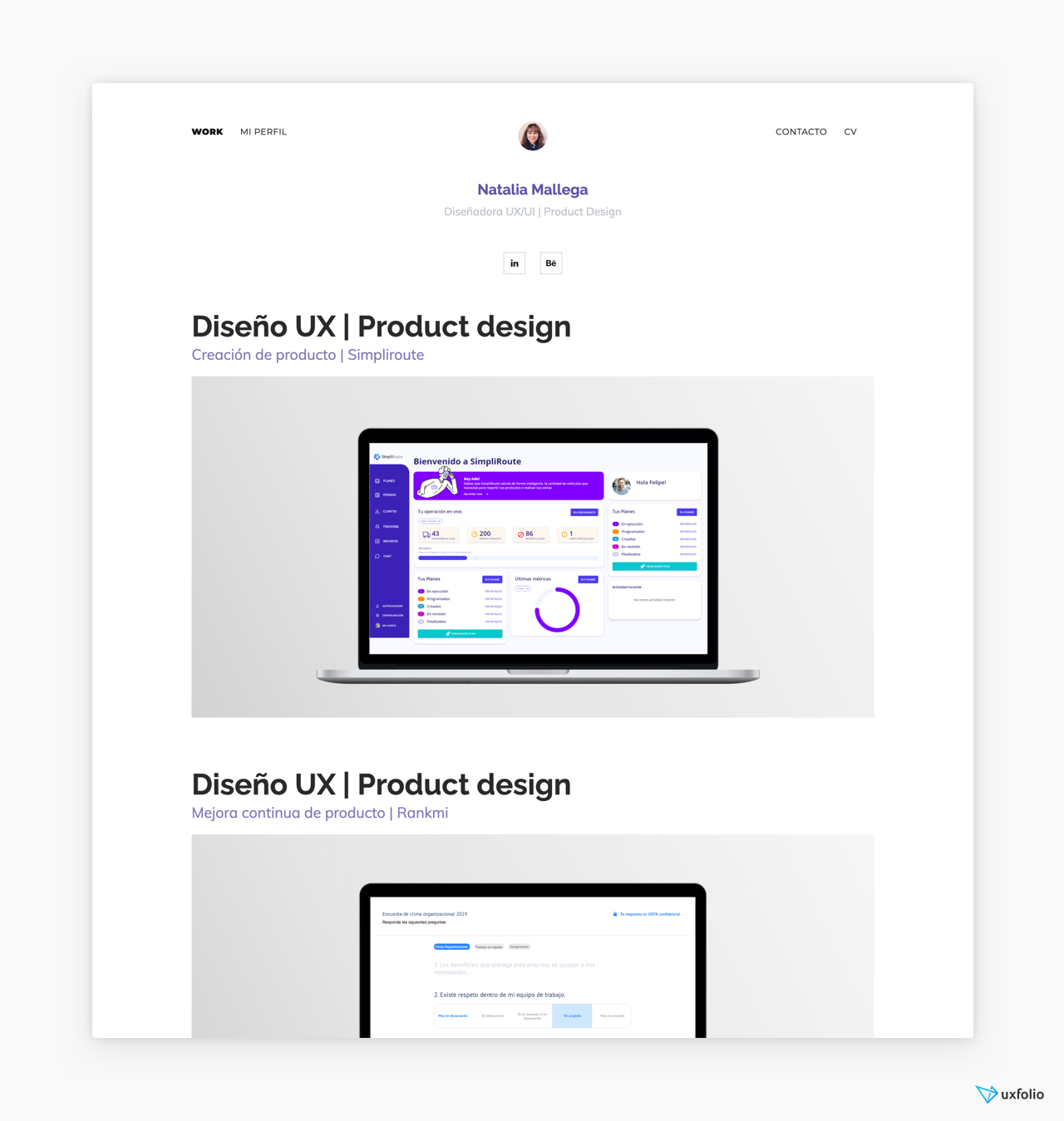Here’s the deal: like it’s the case with other UX roles, most companies expect UX architects to do everything from research to design. You’ll even find development thrown into the mix in some of the job posts. So, keep that in mind as we proceed.
Originally, ‘UX architect’ was intended to be its own role with clear-cut responsibilities and skillset. Like a marriage between UX and information architecture principles. If that’s the role you’re eyeing you’ll need to dive deep into the job ads.
The good news is that it’s possible to find posts looking for actual UX architects instead of the ‘elusive’ unicorns. How do we know? Because we’ve researched and reviewed dozens of UX architect job posts for this article to give you real-world insights and examples:
What do UX architects do?
UX architects are responsible for the structure and flow of products at the intersection of UX and Information Architecture. They make sure that features and content are organized in a logical, intuitive, and complimentary way.
UX design is about creating intuitive, usable, and accessible products. Information architecture is defined as “the practice of deciding how to arrange the parts of something to be understandable.”
Here’s how the two merge in UX architecture: it’s the UX architect’s responsibility to map how the end-user interacts with the product and to develop a structure, including layouts and flows, that ensure the successful execution of all product tasks and functions.
If that’s still too esoteric for you, here’s a rough outline for the tasks of UX architects:
- Planning and conducting user research interviews and surveys.
- Testing and auditing the architecture of digital products.
- Translating research findings and analytics into sitemaps, product maps, user flows, wireframes, and prototypes.
Most job descriptions also stress that UX architects need to be well-versed in all UX-related disciplines, such as UX design, interaction design, information architecture, UX research, product strategy, and content.

The difference between UX architects & UX designers
The biggest difference between the two disciplines is that UX designers usually work on a feature level, while UX architects look at products from a bird’s eye view: how do the features fit into the bigger picture and how do they make sense with the rest of the product. This happens through auditing and developing the best possible structure for any and all information within a product.
However, the current landscape shows that in most cases it’s still the UX designer’s responsibility to think of the bigger picture, and much much more.
Experience is key for UX architects
A great deal of UX architect job posts call for 5 to 10 years of UX experience. Our impression is that many companies consider this position to be a senior one. Kind of like a step-up from UX design. This notion is reinforced by the fact that at this moment there aren’t many junior UX architect ads out there.
The ideal educational background of UX architects
A BA’s or higher degree is mentioned under the minimum requirements of almost all IX architect job descriptions. This makes UX architecture a tougher field to break into than UX design. In UX design, having completed a relevant bootcamp and having an impressive portfolio is usually enough. If you want to become a UX architect, you’ll need a degree in one of the following (or relating) fields:
- Graphic Design,
- Human-Computer Interaction (HCI),
- Interaction Design,
- Information Sciences,
- Human Factors,
- Psychology, or
- Computer Science.
The skills, methods, and tools of UX architects
As a UX architect you’re expected to do or at least have proficiency in the entire UX design cycle:
- Research: interviews, surveys, ethnographic research, persona development, user journey mapping, competitive analysis
- Design: user flow planning, wireframing, user flow planning, prototyping, establishing design systems, UX design, UI design, microcopy writing,
- Information architecture: sitemaps, application maps, process flows, knowledge-organization, hierarchy creation, data modeling.
The toolset will not surprise you much, as it echoes that of UX designer job descriptions’: Figma, Photoshop, Webflow, Material Design, Fluent Design, Sketch, Abstract, Zeplin. As we’ve mentioned in the intro, HTML, CSS, and Javascript are also heavily featured keywords in UX architect job descriptions.

The ideal educational background of UX architects
A BA’s or higher degree is mentioned under the minimum requirements of almost all IX architect job descriptions. This makes UX architecture a tougher field to break into than UX design. In UX design, having completed a relevant bootcamp and having an impressive portfolio is usually enough. If you want to become a UX architect, you’ll need a degree in one of the following (or relating) fields:
- Graphic Design,
- Human-Computer Interaction (HCI),
- Interaction Design,
- Information Sciences,
- Human Factors,
- Psychology, or
- Computer Science.
The skills, methods, and tools of UX architects
As a UX architect you’re expected to do or at least have proficiency in the entire UX design cycle:
- Research: interviews, surveys, ethnographic research, persona development, user journey mapping, competitive analysis
- Design: user flow planning, wireframing, user flow planning, prototyping, establishing design systems, UX design, UI design, microcopy writing,
- Information architecture: sitemaps, application maps, process flows, knowledge-organization, hierarchy creation, data modeling.
The toolset will not surprise you much, as it echoes that of UX designer job descriptions’: Figma, Photoshop, Webflow, Material Design, Fluent Design, Sketch, Abstract, Zeplin. As we’ve mentioned in the intro, HTML, CSS, and Javascript are also heavily featured keywords in UX architect job descriptions.
Do you need a UX architect portfolio?
Yes, you’ll need a portfolio that highlights your architectural leadership experience in UX. This means that your portfolio should be like any other UX portfolio but your case studies need to focus on the “bird’s eye view” that we’ve mentioned above. We’ll go through the most important specifics:
- Focus on relevant projects:
- If you have a mixed bag of projects, always highlight the most relevant ones. If you have a lot to choose from, you should omit everything that has nothing to do with information architecture.
- Include more than 5 case studies:
- This role is considered more of a senior one, therefore, you will hardly get away with 2-3 case studies. Aim for a minimum of 5, highlight as much of your UX design, research, and information architecture skills as possible.
- Highlight your communication skills:
- Presenting ideas internally and externally seems to be a common expectation towards UX architects. So, go ahead and add a section about the handover or stakeholder meetings. You could include your presentation, the key points you’ve made, and how you communicated your ideas through the product development process.
Specialty UX roles – are they fads?
It almost feels like there’s a new UX role invented every day. UX strategist, UX writer, UX engineer, UX auditor, UX architect are just a few that come to mind. However, it’s obvious that most companies don’t fill all these roles.
Instead, what we see is that the UX designer does everything from research to microcopy writing and design. Even separating design and research is still a utopistic daydream in many product teams.
However, this could change in the future as the profession and our technology improves. Trailblazing companies, like Apple, are experimenting with AR/VR, and gamification – for example – is still gaining traction. All these new technologies could create new UX roles that’ll make their mark by making the product development process smoother.
A recent example: UX writing gaining traction
Just a few years ago UX writing was still considered alien. Microcopy was the designer’s responsibility. Only trailblazing companies of Google’s magnitude were hiring for the role. By today, however, you can see that the role is gaining traction: more and more UX writer roles are posted on job boards.
But at many companies even having a separate researcher and designer is a luxury. Coincidentally, these are the companies that use UX architect interchangeably with other UX roles. It could be a tactic as well: since there are not as many UX architect job posts they don’t have to compete with bigger companies who have the budget to pay for their job posts to appear above the rest.
Build your UX architect portfolio with UXfolio!
If you want to become a UX architect you’ll need a portfolio. And UXfolio is the best tool to get it done! With UXfolio you can save plenty of time with features like built-in mockups, text ideas, galleries, and more. Choose a stunning template, customize it, add your material, and get the UX architect job of your dreams! Get started for free!